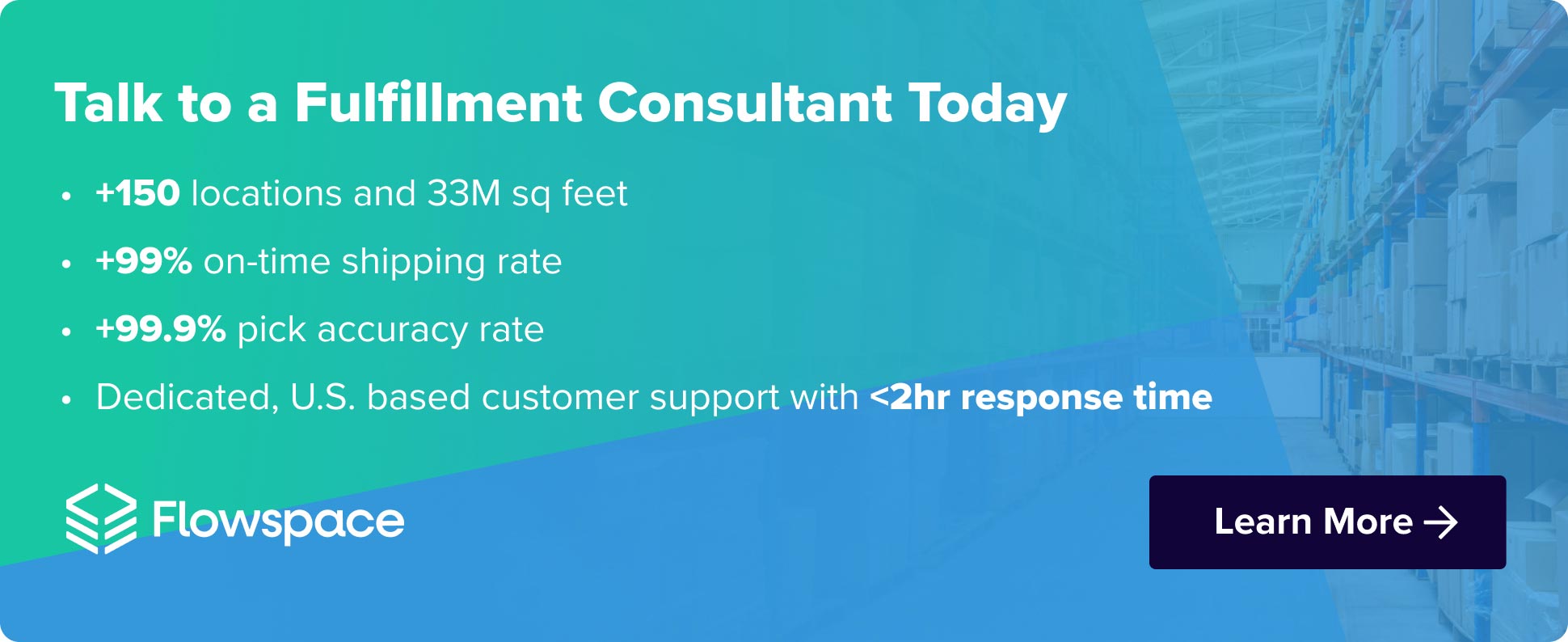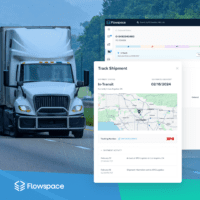
Imagine it’s the holiday season, and an e-commerce store is inundated with orders. Customer excitement is palpable, but the brand’s supply chain is groaning under the strain. Without the agility to scale up operations and meet soaring demand, the brand is at risk of stockouts, frustrated customers, and a tarnished reputation.
No one wants to find themselves in that scenario.
In the face of such challenges, supply chain agility emerges as the strategic solution. It’s the tactical approach that empowers businesses to anticipate and respond to changing demands, adapt to any unforeseen supply chain disruptions, and deliver exceptional customer experiences—during the holidays and throughout the year. With supply chain agility, brands can transform their operations from rigid structures into nimble organizations that thrive amidst change.
Understanding Supply Chain Agility
Traditional supply chain management, with its emphasis on efficiency and cost reduction, is no longer enough in the dynamic world of e-commerce. Businesses must evolve towards supply chain agility, a strategic imperative for success in this competitive arena.
Definition of Supply Chain Agility
Supply chain agility refers to the ability of a business to quickly and efficiently adapt its supply chain to changing market conditions, customer demands, and unforeseen disruptions. It’s about having the flexibility to anticipate and respond to shifts in demand, manage inventory levels effectively, and maintain seamless supply chain resilience amidst unexpected challenges.
Unlike traditional supply chain management, which focuses on optimizing efficiency and cost reduction, supply chain agility emphasizes responsiveness and resilience. It’s about being able to pivot when necessary, adapt to new technologies, and navigate disruptions without compromising customer satisfaction or profitability.
Key characteristics of agile supply chains:
- Flexible, fast-turn logistics and fulfillment
- Real-time inventory visibility and data for decision-making
- Integrated, collaborative supply chain partner relationships
- The ability to execute faster than the competition
Key Components of Supply Chain Agility
By cultivating the key components of supply chain agility, e-commerce businesses can develop a supply chain that is not only efficient but also adaptable, resilient, and responsive to the dynamic demands of the modern marketplace. The foundation of agile supply chains lies in five key components:
Visibility
A clear understanding of the entire supply chain, from raw material sourcing to product delivery, is essential for identifying potential supply chain bottlenecks and making informed decisions. This includes real-time tracking of inventory levels, order status, and transportation routes.
Speed
The ability to react quickly to changes in demand and market conditions is crucial for staying ahead of the competition. This involves streamlining processes, reducing average lead time, and implementing rapid response strategies.
Flexibility
The ability to adapt to changing circumstances, such as new product introductions or unexpected disruptions, is essential for maintaining supply chain continuity. This requires a willingness to experiment, embrace new technologies, and adapt business processes as needed.
Innovation
A culture of innovation fosters the development of new ideas and solutions to enhance supply chain efficiency and agility. This includes exploring emerging technologies, implementing data analytics, and embracing creative problem-solving approaches.
Leadership
Strong leadership is crucial for driving a culture of agility and empowering employees to make informed decisions. Supply chain leaders must foster a collaborative environment, encourage risk-taking, and provide the necessary resources to support supply chain transformation.
Benefits of Supply Chain Agility
The benefits of supply chain agility extend far beyond the ability to adapt to change. It is a strategic imperative that drives business growth, enhances customer satisfaction, and strengthens overall operational efficiency.
Improved Customer Satisfaction
We all know that customer satisfaction reigns supreme. Supply chain agility plays a pivotal role in ensuring that customer expectations are met and exceeded, fostering a loyal customer base that drives business growth.
For example, Zara’s fast fashion supply chain is renowned for its ability to quickly respond to changing trends and deliver new products to stores within weeks. Their agile approach to design, production, and distribution has made them a leader in the fashion industry.
Enhanced Risk Management
The dynamic nature of the e-commerce industry presents various risks, ranging from supply chain disruptions to unexpected market shifts. Supply chain agility provides businesses with the tools to effectively predict, mitigate, and adapt to these risks, protecting their operations and ensuring business continuity.
Agility fosters a proactive approach to risk management, enabling businesses to identify potential risks early on and implement strategies to minimize their impact. This includes real-time monitoring of supply chain performance, analyzing market trends, and establishing contingency plans for unforeseen disruptions.
Increased Efficiency and Productivity
Supply chain agility is not just about adapting to change; it’s also about optimizing operations for enhanced efficiency and productivity. By streamlining processes, eliminating bottlenecks, and embracing innovative technologies, agile businesses can achieve significant gains in both supply chain efficiency and productivity.
Agility drives the elimination of redundant processes, reduces lead times, and optimizes resource utilization, leading to a more streamlined and efficient supply chain.
Brands can boost their supply chain agility by:
- Automating Repetitive Tasks: Automate repetitive tasks, such as order processing and data entry, freeing up employees to focus on higher-value activities.
- Adopting Data-driven Decision Making: Utilize data analytics to identify areas for improvement, optimize inventory management techniques, and make informed decisions that enhance efficiency.
- Embracing Technology for Automation: Implement warehouse automation solutions, such as robotics and automated picking systems, to streamline operations and boost productivity. Learn more about AI in supply chain management in our blog.
How to Achieve Supply Chain Agility
Achieving supply chain agility requires a multi-pronged approach that encompasses the adoption of cutting-edge technology, the cultivation of strong partnerships, and a commitment to continuous learning. Let’s delve into each of these areas and explore how they can transform your e-commerce supply chain into a force to be reckoned with.
Adopting the Right Technology
Technology serves as the backbone of supply chain agility, providing businesses with the tools and insights they need to navigate the ever-changing e-commerce landscape. Here are some key technologies that can revolutionize your supply chain:
- Warehouse Management Systems (WMS): These systems provide real-time visibility into inventory levels, optimize storage and picking strategies, and streamline order processing, leading to increased efficiency and responsiveness.
- Demand Forecasting Software: By analyzing historical data and market trends, these tools can predict future consumer demand with greater accuracy, enabling businesses to proactively adjust inventory levels and production schedules to meet customer needs.
- Transportation Management Systems (TMS): TMS optimize shipping routes, reduce transportation costs, and provide real-time tracking of shipments, enhancing supply chain visibility and agility.
Building Strong Relationships with Suppliers and Partners
A strong network of reliable suppliers and partners is essential for achieving supply chain agility. These partnerships provide businesses with access to diverse resources, expertise, and collaboration opportunities, enhancing their ability to adapt to changing market conditions and unforeseen disruptions. Picture a network of partners working together in harmony, each contributing their unique strengths to support your e-commerce fulfillment process and venture.
Tips on how to build and maintain these relationships:
- Establish Open Communication and Transparency: Foster open communication channels with partners, sharing information openly and transparently to build trust and collaboration.
- Align Goals and Objectives: Ensure that supply chain partner goals and objectives align with the overall business strategy, creating a cohesive and mutually beneficial relationship.
- Recognize and Reward Partner Contributions: Acknowledge and appreciate the contributions of partners, fostering a sense of valued cooperation and strengthening the relationship.
Investing in Training and Development
Achieving supply chain agility requires a culture of continuous learning and adaptation. By investing in training and development programs, you can equip your employees with the skills and mindset necessary to navigate the ever-changing e-commerce landscape. Imagine a workforce that is nimble, adaptable, and eager to embrace new challenges—that’s the power of continuous learning.
Here are some of the trainings brands could provide their staff to better adopt agile principles:
- Agile Methodologies Training: Provide training on agile methodologies, such as Scrum and Kanban, to foster a culture of flexibility, collaboration, and rapid iteration.
- Supply Chain Management Training: Enhance employees’ understanding of supply chain management principles, enabling them to identify and address potential bottlenecks and inefficiencies.
- Technology Training: Provide training on the latest supply chain technologies, empowering employees to leverage these tools effectively for improved efficiency and agility.
Overcoming Challenges in Implementing Supply Chain Agility
The journey towards supply chain agility is not without its challenges. Businesses may encounter various obstacles as they transition from traditional supply chain practices to a more agile approach. However, by identifying and addressing these challenges strategically, businesses can successfully navigate the path to supply chain agility and reap its many benefits.
Identifying and Addressing Bottlenecks
Bottlenecks, or points of congestion or inefficiency, can hinder the smooth flow of goods and information within a supply chain. These supply chain bottlenecks can arise from various factors, such as manual processes, outdated technology, or communication gaps. To achieve supply chain agility, it is crucial to identify and eliminate these bottlenecks.
Strategies to Find and Eliminate Bottlenecks:
- Conduct thorough supply chain mapping: Create a detailed map of the entire supply chain, identifying all steps, processes, and stakeholders involved.
- Analyze data and identify slowdowns: Analyze data on inventory levels, order processing times, and delivery metrics to pinpoint areas of congestion or inefficiency.
- Gather employee feedback: Consult with employees across various departments to gain insights into potential bottlenecks and areas for improvement.
- Implement root cause analysis: Once bottlenecks are identified, conduct a root cause analysis to determine the underlying causes and develop targeted solutions.
Managing Change Effectively
Transitioning to a more agile supply chain often involves significant changes in processes, technologies, and mindsets. Managing these changes effectively is crucial for ensuring a smooth transition and gaining employee buy-in.
Strategies to Manage Change Effectively:
- Communicate clearly and consistently: Communicate the rationale behind the shift to supply chain agility and clearly outline the expected benefits for both the company and employees.
- Involve employees in the process: Engage employees in the process of identifying, evaluating, and implementing agile solutions, fostering a sense of ownership and investment.
- Provide training and support: Equip employees with the necessary training and support to adapt to new processes, technologies, and mindsets required for agile supply chain management.
- Celebrate successes and encourage continuous improvement: Recognize and celebrate successful implementations of agile practices, reinforcing the positive impact of change and fostering a culture of continuous improvement.
Case Study: Personal Care Products
Consider the case of a global leader in personal care products. As a multinational company, they have established a well-oiled network of warehouses, strategically located to optimize distribution and minimize transportation costs. Each warehouse is meticulously managed, with inventory levels carefully monitored and replenished to ensure consistent supply.
But once a quarter, they get a huge shipment of product from manufacturers allocated for warehouse club distribution. The goods are big and bulky, and because its owned locations are already optimized, the brand needs to find a way to absorb this massive influx of product until it can go out to Costco and Sam’s Club distribution centers nationwide. They need agility at the highest level.
The quarterly warehouse club shipment poses a unique challenge, requiring a temporary surge in storage capacity. To address this challenge with flexibility and resourcefulness, the company turns to Smart Network solutions that provide flexible warehouse space that can expand and contract when the brand needs it the most.
Leveraging Flowspace for Enhanced Supply Chain Agility
Flowspace captures all the crucial data brands need to scale an agile supply chain, while connecting it to the enterprise resource planning and supply chain systems already in place. Flowspace’s flexible model is the solution for enterprise supply chain leaders creating agility and resilience while reducing capital expenditures.
With the Flowspace platform, businesses gain seamless ERP connectivity, enabling real-time tracking of inventory levels, movement, and the status of goods across all storage facilities. This holistic visibility ensures informed decision-making, optimizing inventory management and fulfillment processes.
Flowspace’s flexible terms empower businesses to scale their storage space up or down based on their fluctuating inventory needs. This pay-as-you-go model eliminates the burden of fixed storage costs, aligning expenses with actual usage.
Flowspace’s inventory management software and real-time data capabilities empower businesses to push data into any and every business system they already use. This seamless data integration streamlines operations, eliminates data silos, and fosters a holistic understanding of supply chain performance.
Flowspace offers tailored fulfillment software and solutions that align with specific commodity types and sales channels. This bespoke approach ensures that fulfillment processes are optimized for each product and sales channel, maximizing efficiency and customer satisfaction.
Get in touch today to find out how Flowspace can unlock a new level of supply chain agility for your business.







